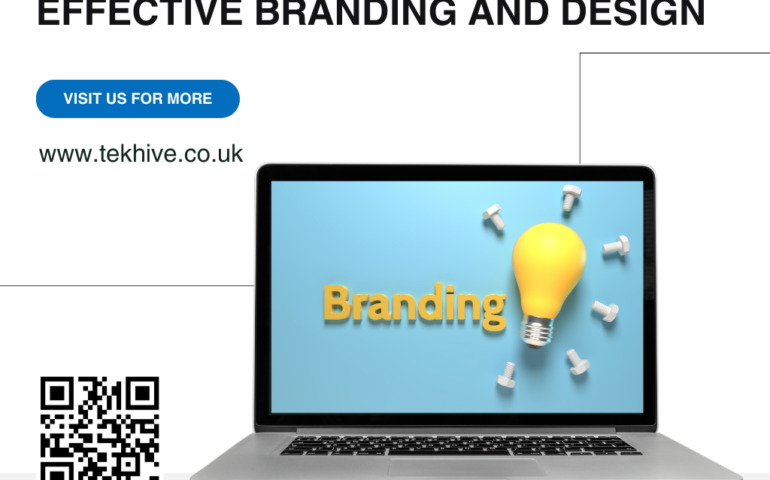
Branding and Design

Branding and design are two of the most powerful tools a business can use to establish a memorable identity. Whether you’re launching a new product, creating a website, or rebranding an existing company, these elements are vital for success. Not only do they help you stand out, but they also communicate your message, values, and promise to customers. But how can you master branding and design to build a strong business presence? In this guide, we’ll walk you through the essentials of creating a brand that resonates and design elements that captivate.
What is Branding?
First and foremost, branding is more than just a logo. It is the sum of your business’s identity—how customers perceive your products, services, and overall reputation. It includes elements like your company’s mission, vision, core values, and the tone of your communication. Moreover, it’s about creating an emotional connection with your audience, which fosters trust and loyalty.
Key Elements of Branding:
- Brand Name: The name should be catchy, relevant, and easy to remember.
- Logo: The logo should be simple, distinct, and reflective of your brand’s personality.
- Tagline: A short phrase that captures your brand’s essence.
- Brand Voice: The tone and style of communication that aligns with your brand’s persona.
The Importance of Design in Branding
Similarly, design plays a crucial role in how your brand is perceived. It goes beyond aesthetics; it also involves functionality, user experience, and emotional appeal. For instance, a well-designed website is not only visually appealing but also user-friendly, encouraging users to engage further with your brand.
Essential Design Elements:
- Color Scheme: Colors evoke emotions and set the mood for your brand. For example, blue often represents trust, while red signifies passion.
- Typography: The fonts you choose convey your brand’s tone. Clean, modern fonts often suggest professionalism, while handwritten styles evoke creativity.
- Imagery: Images, graphics, and videos should reflect your brand’s message and engage the audience visually.
- Layout: A clear and structured layout ensures a seamless user experience, keeping users interested and driving them to action.
How Branding and Design Work Together
While branding defines who you are, design communicates that identity visually. Both elements must be aligned for a cohesive message that resonates with your audience. For example, if your brand emphasizes innovation, the design should reflect a modern, cutting-edge aesthetic.
Steps to Build an Effective Branding and Design Strategy
1. Identify Your Target Audience
- To begin with, understanding your target audience is crucial. This includes knowing their age, interests, behavior, and pain points. By identifying your ideal customers, you can tailor your brand’s message and design elements to appeal directly to them.
2. Define Your Brand’s Mission and Vision
- Next, clarify your brand’s mission (what you aim to achieve) and vision (where you see your brand in the future). This sets the foundation for the design direction and communication strategy.
3. Establish Brand Guidelines
- It is essential to create a brand guideline that outlines your brand’s voice, color palette, logo usage, typography, and imagery style. These guidelines ensure consistency across all marketing channels, from social media to print materials.
4. Develop a Unique Logo
- A logo is often the first visual interaction with your brand. Therefore, it should be memorable and easy to recognize. Additionally, ensure that it scales well for both digital and print media.
5. Choose an Appealing Color Scheme
- Colors can significantly impact a customer’s perception of your brand. Hence, select a palette that aligns with your brand’s values and appeals to your target market.
6. Craft a Distinctive Tagline
- A tagline is a succinct way to communicate your brand’s promise. It should be short, impactful, and relevant to your brand’s purpose.
7. Create a Cohesive Website Design
- Your website is often the hub of your brand. Consequently, ensure that it is visually appealing, easy to navigate, and mobile-responsive. A well-designed website can enhance credibility and increase conversion rates.
8. Leverage Social Media for Visual Branding
- Social media platforms offer an excellent opportunity to visually express your brand. Therefore, use consistent design elements, themes, and messaging across your profiles to build brand recognition.
Why Consistency is Key in Branding and Design
Consistency not only builds trust but also reinforces your brand’s identity over time. When your branding and design elements are uniform across all platforms—whether it’s your website, social media, or physical products—customers are more likely to remember and trust your brand. Furthermore, consistent branding helps establish your brand as reliable and professional, making it easier to retain customers.
The Impact of Branding and Design on Customer Loyalty
A strong brand identity and visually appealing design can significantly influence customer loyalty. This is because customers are more likely to support a brand they feel emotionally connected to. Additionally, a well-designed brand can generate positive word-of-mouth, as people often share products or services that are aesthetically pleasing and aligned with their values.

Effective Branding and Design
To sum up, effective branding and design are fundamental to creating a strong business identity that resonates with your target audience. By focusing on both the emotional and visual aspects, you can build a brand that not only attracts customers but also retains them. Remember, branding defines who you are, while design communicates it. When done right, they create a powerful combination that sets you apart in a crowded marketplace.
If you want to read more information about how to boost your website traffic, just visit –> TekHive





